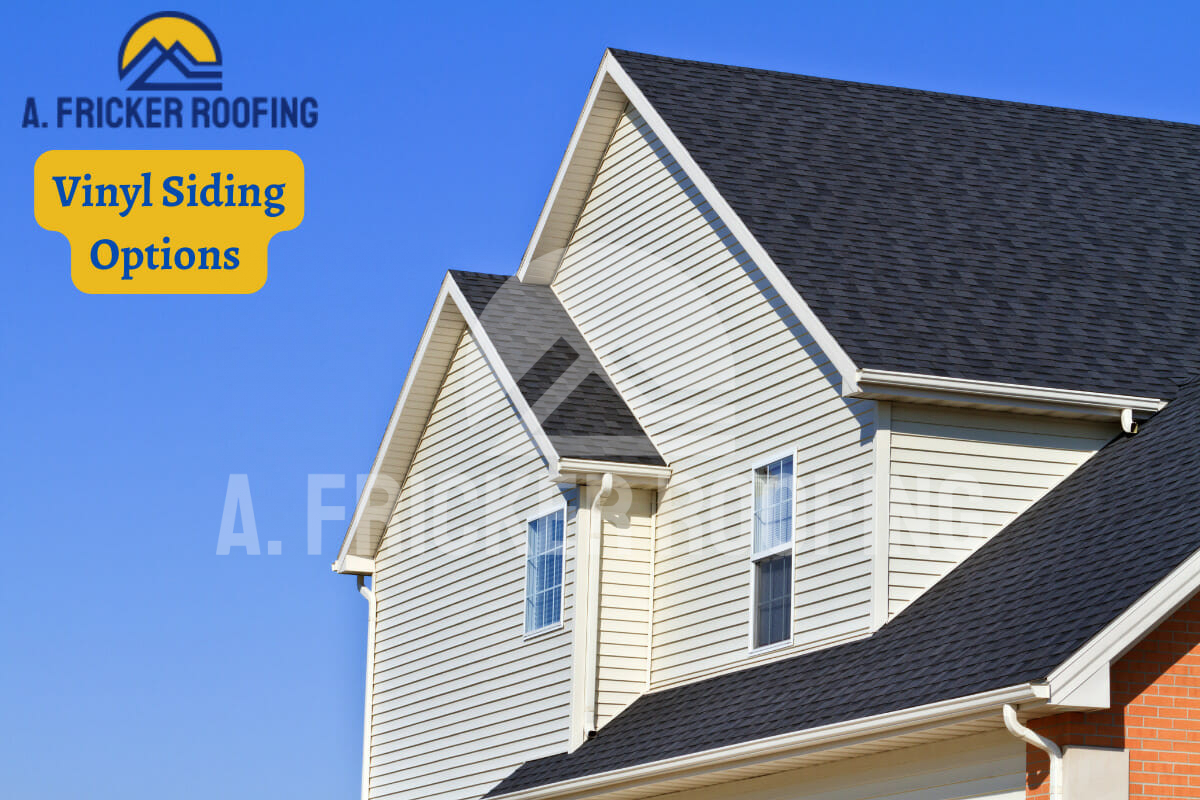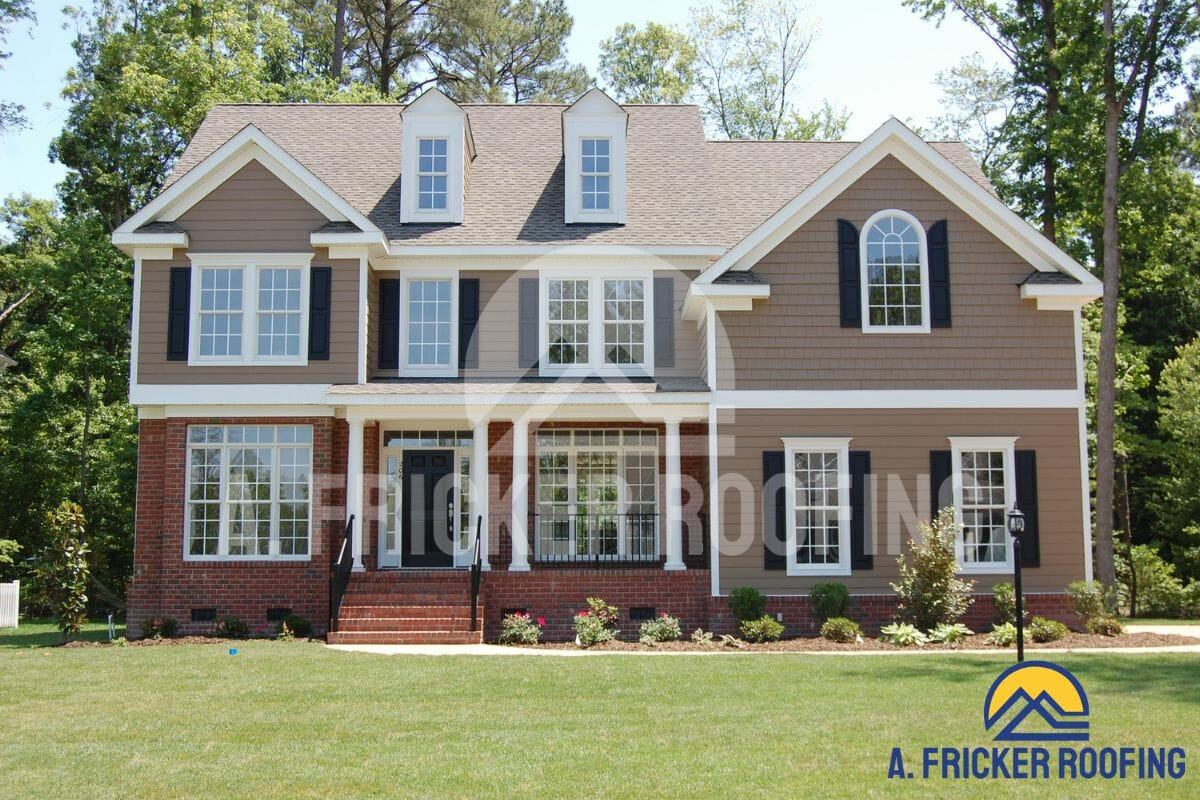In the realm of home exteriors, the choice between stone veneer siding and natural stone can be as puzzling as deciding between a classic novel and its movie adaptation. Each has its unique charm and appeal, but which one suits your needs and preferences better? Let’s break down the characteristics, benefits, and drawbacks of both options to help you make an informed decision.
What Is Stone Veneer Siding?

Stone veneer siding, also known as faux stone veneer siding, is a siding material designed to mimic the appearance of natural stone while offering greater affordability and ease of installation.
Some homeowners are interested in the look of stone siding but are concerned about the weight on the structure of their house. This isn’t true with stone veneer siding, as it mimics natural or traditional stone siding, but is lighter and more cost-effective.
Stone veneer siding is essentially a thin layer of stone-like material that’s applied to the exterior of a building, creating the illusion of a solid stone structure.
Moreover, stone veneer is typically made from concrete or a blend of Portland cement and natural aggregates. This mixture is poured into molds, creating realistic stone textures and colors.
Types Of Stone Veneer Siding
Since stone veneer siding has two main types available, you won’t have to choose between a huge variety of options, unlike natural stone siding.
1. Natural Stone Veneer
This type of veneer is made from real stone, typically limestone, granite, or slate, and is sliced into thin sections to form a firm, elegant, and natural look. Natural stone veneer offers an authentic and timeless look, but can still be heavy and require a sturdy support structure.
2. Manufactured Stone Veneer (MSV)
MSV, also known as cultured stone or faux stone, is made from a blend of cement, aggregates, and pigments. It is designed to mimic natural stone’s appearance and comes in various shapes, sizes, and colors. MSV is lighter and more affordable than natural stone.
Pros And Cons Of Stone Veneer Siding
Considering the pros and cons of stone veneer siding will help you decide which option is best for your home.
Pros of Stone Veneer Siding
1. Cost-Efficient:
Stone veneer siding is generally more budget-friendly than natural stone, making it an attractive option for homeowners looking to achieve the look of real stone without breaking the bank.
2. Lightweight:
Stone veneer is much lighter than natural stone, which makes it easier to handle during installation. This can significantly reduce labor costs.
3. Versatility:
Stone veneer comes in a wide variety of styles, colors, and textures, allowing you to choose a look that perfectly complements your home’s aesthetic.
4. Easy Maintenance:
It resists staining and weathering relatively well, requiring minimal upkeep compared to natural stone.
5. DIY-Friendly:
Stone veneer siding can be installed by skilled DIYers, further saving you money on installation costs.
Cons of Stone Veneer Siding
1. Less Authenticity:
While it mimics the appearance of natural stone, stone veneer lacks the genuine feel and depth of texture that natural stone offers.
2. Durability:
While durable, stone veneer siding is not as long-lasting as natural stone. It may require replacement or repairs over time.
3. Environmental Impact:
The production process of stone veneers has a higher carbon footprint due to the manufacturing and adhesive materials used.
4. Limited Heat Resistance:
Stone veneer may not be as heat-resistant as natural stone, which can be a concern if you live in an area prone to wildfires or extreme heat.
Apart from the stone veneer and natural stone siding, there are numerous other siding options to choose from. Read more here: Why Homeowners Choose Hardie Board Siding Over Vinyl
What is Natural Stone Siding?

Natural stone siding, as the name suggests, is made from real, naturally occurring stone. Unlike synthetic or stone veneer siding, it consists of quarried or harvested stones, which are mined, prepared, and installed as siding for the exterior walls of buildings.
It’s a versatile and timeless choice that has been employed in construction for centuries. Natural stone siding adds elegance, sophistication, and rustic appeal to the building’s exteriors while also protecting it from elements, rain, and moisture. Its earth tones and natural appeal stand out compared to other siding options.
Types of Natural Stone Siding
Natural stone siding offers an array of options, each with its unique characteristics and aesthetic appeal.
1. Granite Siding
Granite, known for its durability and elegance, is a popular choice. Its distinctive veining and speckling create a luxurious look that can last for generations.
2. Slate Siding
Slate, with its fine-grained texture and rich colors, adds a touch of modern sophistication to your home. It’s equally at home in contemporary and traditional settings.
3. Limestone Siding
Limestone exudes classic elegance with its muted tones and soft texture. It’s perfect for creating a warm and inviting exterior, complementing various architectural styles.
4. Sandstone Siding
If you seek a rustic charm, sandstone is the answer. Its natural, earthy hues make it an ideal choice for homes with a relaxed, country-inspired aesthetic.
Pros And Cons Of Natural Stone Siding
Like stone veneer, natural stone siding has its own set of benefits and drawbacks.
Pros of Natural Stone Siding
Natural stone siding possesses several distinctive characteristics that make it stand out as a premium building material:
1. Durability:
As discussed earlier, natural stone is known for its longevity and durability. It can withstand harsh weather conditions, UV exposure, pests, and fire. This durability means that stone siding often outlasts many other options available on the market, making it a cost-effective choice in the long run.
2. Aesthetic Versatility:
Each type of natural stone used in siding has its own color, texture, and pattern, providing a wide range of aesthetic options. This allows homeowners and builders to choose a stone that complements the architectural style and design preferences of the structure.
3. Eco-Friendly:
Natural stone siding is considered an eco-friendly choice. It involves minimal processing compared to synthetic materials, reducing its environmental impact. Furthermore, it can be recycled or repurposed at the end of its lifespan, minimizing waste.
4. Distinctive:
Every piece of natural stone is unique and cannot be replicated. This quality adds character and visual appeal to buildings, making them stand out.
5. Low Maintenance:
Once installed, natural stone siding typically requires minimal maintenance. Regular cleaning and occasional inspections are usually sufficient to keep it looking pristine.
Cons of Natural Stone Siding
1. High Initial Cost
One of the most significant drawbacks of natural stone siding is its cost. It tends to be more expensive than many other siding materials, both in terms of material and installation.
2. Installation Complexity
Installing natural stone siding is a specialized skill. It’s a labor-intensive process that demands experienced professionals, adding to the overall cost. Installing natural stone siding also takes longer, depending on the home’s size and complexity, ultimately leading to a higher cost.
3. Weight Issues
Natural stone is heavy and your home’s structure must be able to support its weight. Retrofitting an older home with this siding can be challenging and costly.
4. Limited Variety
While stone offers a range of textures and colors, the variety is limited compared to synthetic siding materials. Finding the perfect match for your home’s aesthetics can be challenging.
5. Prone to Stains
Natural stone is porous, making it susceptible to staining from substances like oil, algae, or rust. Stains can be challenging to remove and may leave lasting marks.
Which Option Is Right For You? Factors To Consider
From the above discussion, you might have a pretty clear idea about which siding option to choose for your home or office. This section will further help you make the right choice.
1. Aesthetic Preference
If you value the genuine, rustic look of stone and appreciate its uniqueness, natural stone siding may be the better choice. However, if you want a similar look at a lower cost and with more design options, stone veneer siding could better align with your preferences.
2. Cost Considerations
If your budget is a primary concern, stone veneer siding provides a more cost-effective solution while still achieving a stone-like appearance. Natural stone, while pricier, may be worth the investment if you prioritize low maintenance requirements and longevity.
Do you want to install cost-effective yet aesthetically appealing siding on your home or office? Vinyl siding may be the right choice. Check out our blog post: How Much Does Vinyl Siding Cost?
3. Durability And Longevity
Natural stone is the superior choice in terms of durability, as it can last for decades or centuries if well-kept. Stone veneer siding, while durable, may require more frequent replacement and maintenance over time.
Are You Planning To Install Siding On Your Home Or Office In Tulsa, OK?
If you want to install siding on your home, A. Fricker Roofing and Waterproofing in Tulsa, OK, is the right choice. We are skilled, experienced, and expert installers who you can trust and rely on. Contact us today at (918) 402-7167 to consult with our professional installers.




